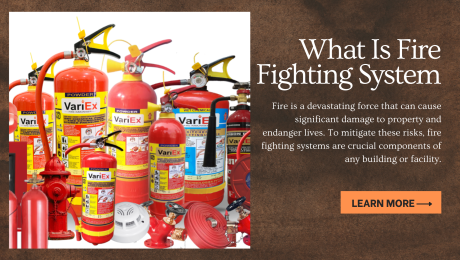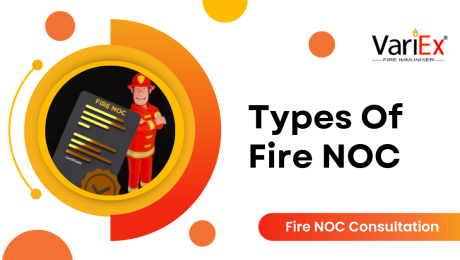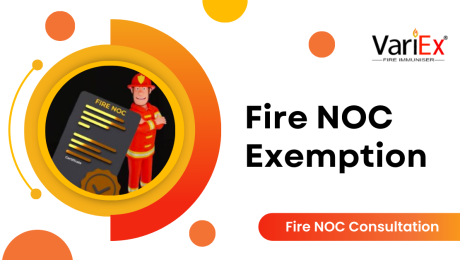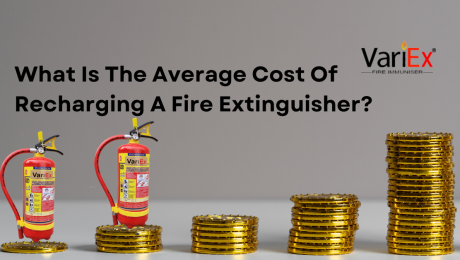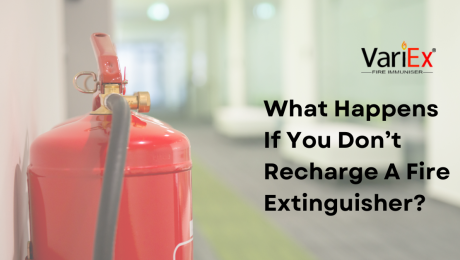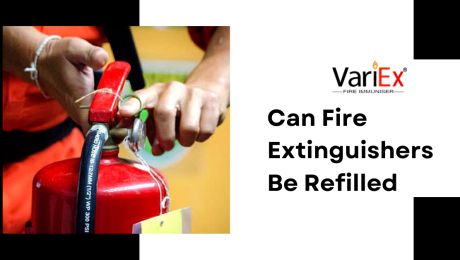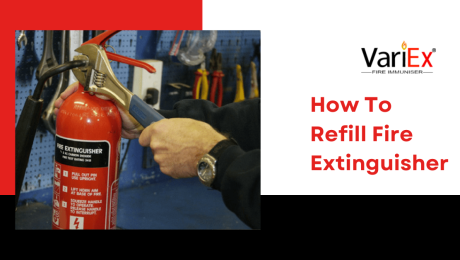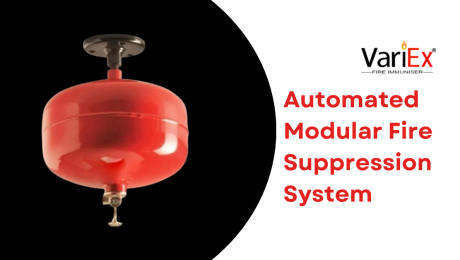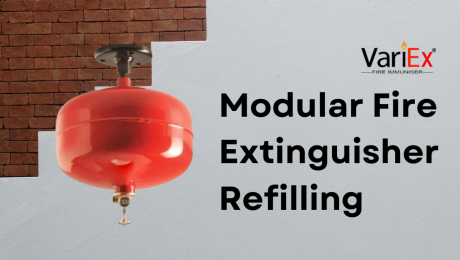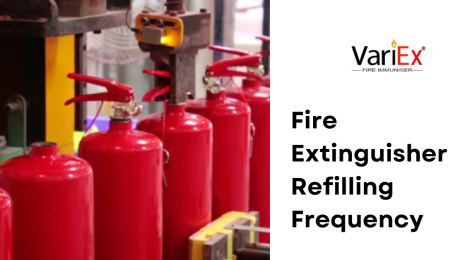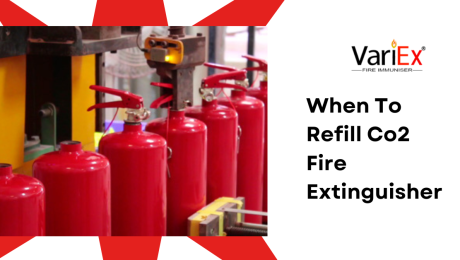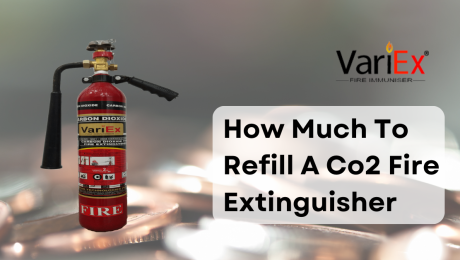Fire safety’s is a critical aspect of ensuring the well-being of individuals and protecting property. It involves a comprehensive set of practices and measures designed to prevent, detect, and respond to fire hazards. Key elements of fire safety’s include the installation of smoke detectors, fire extinguishers, and sprinkler systems in homes and businesses. Educational initiatives and fire drills are essential to enhance awareness and preparedness. Additionally, adherence to safety regulations and regular inspections of fire safety’s equipment are crucial for maintaining effectiveness. Fire-resistant materials in construction and the development of clear evacuation plans further contribute to overall safety. By prioritizing fire safety’s, individuals and communities can mitigate the risks associated with fires, fostering a secure environment where lives and property are safeguarded.
What Is Fire Fighting System
Monday, 12 February 2024 by Sonu Shree
A fire fighting system is an essential safety measure implemented in buildings to mitigate the risks associated with fire incidents. It comprises a combination of equipment, devices, and procedures designed to detect, control, and extinguish fires effectively. The primary components of a fire fighting system include fire detection and alarm systems, fire extinguishers, fire hydrants, and automatic sprinkler systems. Fire detection and alarm systems are crucial in early fire detection and alerting occupants, enabling them to evacuate the building promptly while the fire is extinguished. Fire extinguishers provide a means to extinguish small fires before they escalate, whereas fire hydrants connect to the municipal water supply and ensure a continuous flow of water for firefighting operations. Automatic sprinkler systems play a critical role in suppressing fires, as they activate automatically when the ambient temperature rises above a predetermined level. Overall, a well-designed fire fighting system is crucial for safeguarding life and property in the event of a fire emergency.
Business fire safetyfire extinguisherFire ExtinguishersFire Extinguishers GasFire FightingFire Fighting Equipment Supplierfire fighting sprinkler systemfire fighting sprinklers systemFire fighting systemfire fighting system in bengaluruFire fighting system worksFire SafetyFire Safety at HomeFire Safety at hospitalFire Safety at Workplacefire safety awarenessfire safety brandfire safety equipmentFire safety equipmentsfire suppression systemfixed fire fighting system
- Published in ABC Fire Extinguisher, CO2 Fire Extinguisher, Fire Alarm, Fire Extinguisher, Fire Fighting System, FIre Hydrant, Fire NOC, Fire Safety Equipment, Fire Sprinkler System, Fire Suppression
No Comments
Types Of Fire NOC (NO Objection Certificate)
Tuesday, 30 January 2024 by Sonu Shree
A No Objection Certificate (NOC) is a vital document required for obtaining fire safety clearances. There are various types of Fire NOCs that cater to different purposes and premises. The first type is an NOC for commercial buildings, which includes offices, shopping malls, and restaurants. It ensures compliance with fire safety measures, such as installing fire extinguishers, smoke detectors, and fire exit routes. The second type is an NOC for residential buildings, ensuring fire safety in apartments and housing complexes. This includes requirements such as fire-resistant doors, proper ventilation systems, and fire alarms. In addition, there are specific NOCs for industries, entertainment venues, educational institutions, and hospitals, each encompassing their unique safety regulations. It is imperative to obtain the relevant NOCs to guarantee the safety of occupants and prevent fire hazards.
- Published in Fire NOC
Fire NOC Building Height
Tuesday, 30 January 2024 by Sonu Shree
The Fire NOC (No Objection Certificate) Building Height regulation plays a crucial role in ensuring the safety of buildings in terms of fire hazards. This regulation is designed to prevent the escalation of fire incidents by imposing maximum building height limits that allow for efficient fire-fighting operations and emergency evacuation plans. It takes into consideration various factors, such as the availability of firefighting equipment, access routes, and the structural integrity of the building. By adhering to these guidelines, building developers, architects, and authorities can work together to create structures that mitigate potential fire risks and facilitate emergency response. Compliance with the Fire NOC Building Height regulation is imperative to safeguard lives, protect property, and foster a secure urban environment.
- Published in Fire NOC
Fire NOC Renewal Documents
Tuesday, 30 January 2024 by Sonu Shree
The process of renewing a Fire NOC (No Objection Certificate) is vital to ensure the safety and compliance of a building or establishment. When it comes to Fire NOC renewal documents, it is crucial to provide accurate and up-to-date information. These documents typically include a detailed fire safety inspection report, updated floor plans highlighting emergency exits and fire extinguisher locations, and maintenance records for fire safety equipment. Additionally, any modifications or changes made to the building’s fire safety systems should be documented and submitted along with the renewal application. By having clear and comprehensive Fire NOC renewal documents, authorities can verify that all necessary fire safety measures are in place, minimizing the risk of fire-related incidents and ensuring the wellbeing of residents or occupants.
- Published in Fire NOC
How To Get Fire NOC
Tuesday, 30 January 2024 by Sonu Shree
Getting a Fire NOC (No Objection Certificate) is a crucial step for ensuring the safety and compliance of a building or establishment. To obtain a Fire NOC, the first step is to thoroughly assess the premises and its fire safety measures. This includes installing fire extinguishers, smoke detectors, and fire alarms in appropriate locations. Next, it is essential to conduct fire safety drills and train employees or residents on fire safety protocols. Additionally, proper documentation, such as building plans and fire safety certificates, should be in order. Finally, an application should be submitted to the local fire department with all the necessary documentation for review and inspection. By following these steps and adhering to fire safety regulations, one can successfully obtain a Fire NOC in a timely manner.
- Published in Fire NOC
Fire NOC Exemption
Tuesday, 30 January 2024 by Sonu Shree
A Fire NOC Exemption is a document that allows certain establishments to operate without obtaining a No Objection Certificate (NOC) from the local fire department. This exemption is typically granted to buildings that have implemented extensive fire safety measures and comply with all the necessary fire codes and regulations. The purpose of this exemption is to streamline the process for businesses that have invested in robust fire safety systems, allowing them to focus on their operations without unnecessary bureaucratic hurdles. However, it is important to note that the exemption does not absolve the establishment from complying with fire safety standards. Regular inspections and mandatory compliance with fire safety regulations are still mandatory to ensure the safety of occupants and neighboring structures. Obtaining a Fire NOC Exemption can significantly benefit businesses by saving time, resources, and administrative effort, while maintaining a high level of fire safety standards.
- Published in Fire NOC
What Is The Average Cost Of Recharging A Fire Extinguisher?
Wednesday, 27 December 2023 by Sonu Shree
The average cost of recharging a fire extinguisher varies depending on the type and size of the extinguisher. Typically, the cost ranges from $15 to $50 per unit. Recharging a small portable extinguisher usually falls within the lower end of the spectrum, while larger, more specialized extinguishers can be at the higher end. It is important to note that recharging should be carried out by a qualified professional to ensure that the extinguisher is fully functional and meets safety standards. Additionally, the cost may also include any necessary replacement parts or maintenance required during the recharge process. For an accurate estimate, it is best to consult with a reputable fire safety company or service provider.
- Published in Fire Extinguisher
What Happens If You Don’t Recharge A Fire Extinguisher?
Wednesday, 27 December 2023 by Sonu Shree
A fire extinguisher is an essential safety device that can swiftly extinguish small fires before they turn into major disasters. However, like any other tools, fire extinguishers require regular maintenance, including recharging, to ensure their effectiveness. If a fire extinguisher is not recharged when required, it will be rendered useless in times of emergency. Over time, the pressure inside the extinguisher cylinder gradually decreases, leading to a decrease in the propellant gas. Without a proper recharge, the fire extinguisher lacks the necessary pressure to expel the extinguishing agent effectively. Consequently, in the event of a fire, an unrecharged extinguisher may fail to emit the required pressure and may no longer be capable of suppressing the flames. Therefore, it is of utmost importance to diligently schedule and perform regular recharging of fire extinguishers to maintain their functionality and ensure the safety of individuals and property.
- Published in Fire Extinguisher
Can Fire Extinguishers Be Refilled
Wednesday, 27 December 2023 by Sonu Shree
Yes, fire extinguishers can be refilled. Refilling a fire extinguisher is a crucial maintenance practice that ensures its proper functioning in case of an emergency. However, it is important to note that not all types of fire extinguishers can be refilled. Typically, carbon dioxide, dry chemical, and clean agent fire extinguishers can be refilled, whereas water and foam extinguishers cannot be refilled and need to be replaced entirely. Refilling a fire extinguisher should always be done by a certified professional who is knowledgeable about the specific type of extinguisher and its requirements. Regular maintenance and refilling of fire extinguishers are essential to adhere to safety regulations and ensure the readiness of these critical firefighting devices.
- Published in Fire Extinguisher
How To Refill A Fire Extinguisher
Tuesday, 26 December 2023 by Sonu Shree
Fire safety is of utmost importance in any home or workplace, and having a functional fire extinguisher can be a lifesaver in an emergency. However, many people are unaware that fire extinguishers need to be refilled after use or periodically to ensure their effectiveness. In this article, we will guide you through the process of refilling a fire extinguisher, ensuring that it is ready to combat any fire that may occur.
- Published in Fire Extinguisher
Automated Modular Fire Suppression System
Tuesday, 26 December 2023 by Sonu Shree
An Automated Modular Fire Suppression System is a cutting-edge technology designed to enhance fire safety measures in various environments. This advanced system utilizes state-of-the-art sensors and detectors, coupled with an intelligent control unit, to detect and extinguish fires swiftly and effectively. With its modular design, the system can be customized according to the specific needs of any space, be it a residential building, industrial facility, or data center. The sensors constantly monitor the environment for any signs of fire, triggering the immediate release of a targeted extinguishing agent to suppress the flames. This automated solution eliminates the need for human intervention, thereby minimizing the risk to personnel and reducing potential property damage. With its professional and informative tone, this paragraph highlights the key features and benefits of an Automated Modular Fire Suppression System, emphasizing its significance in safeguarding lives and assets.
- Published in Fire Extinguisher
Modular Fire Extinguisher Refilling
Tuesday, 26 December 2023 by Sonu Shree
Modular Fire Extinguisher Refilling is a crucial service for maintaining safety in commercial and residential spaces. The process involves a systematic approach to refilling fire extinguishers, ensuring they are fully operational in case of an emergency. Trained professionals follow strict guidelines and industry standards to ensure the extinguishers are refilled with the correct type and amount of fire suppressant agents. This process requires precision and expertise to ensure the extinguishers are not over or underfilled, maximizing their effectiveness during a fire incident. The use of modular systems allows for efficient refilling, minimizing downtime and ensuring a smooth and quick return of the fire extinguishers into service. As fires can occur unexpectedly, regular modular fire extinguisher refilling is vital to safeguarding lives and property.
- Published in Fire Extinguisher
Fire Extinguisher Refilling Frequency
Tuesday, 26 December 2023 by Sonu Shree
Fire extinguisher refilling frequency is a critical aspect of fire safety and prevention. Regular refilling ensures that fire extinguishers are fully functioning and ready for use in case of emergencies. The frequency of refilling mainly depends on the fire extinguisher type and usage. Portable fire extinguishers typically require refilling every 5 to 6 years, while some specialized extinguishers might need refilling annually. However, it is crucial to conduct routine inspections of fire extinguishers and refill them immediately after use or whenever the pressure gauge drops into the “refill” zone. It is advisable to consult with a certified fire safety professional to determine the specific refilling frequency based on the extinguisher type, local regulations, and potential risks within a building or premises. By adhering to the recommended refilling frequency, individuals and organizations can ensure the effectiveness of their fire extinguishers and enhance overall fire safety measures.
- Published in Fire Extinguisher
When To Refill Co2 Fire Extinguisher
Tuesday, 26 December 2023 by Sonu Shree
Knowing when to refill a CO2 fire extinguisher is crucial for ensuring its effectiveness in case of an emergency. The general rule of thumb is to have the extinguisher refilled every five to six years, even if it hasn’t been used. However, specific factors may require refilling before this timeframe. One such factor is a noticeable loss of pressure, which can be determined by checking the pressure gauge. If the gauge indicates a pressure drop, it is essential to refill the extinguisher promptly. Additionally, any visible damage or signs of leakage should also prompt an immediate refill, as these can compromise the extinguisher’s functionality. Regular inspections of the CO2 fire extinguisher, adherence to manufacturer guidelines, and professional maintenance are vital to guarantee its reliability when needed.
- Published in Fire Extinguisher
How Much To Refill A Co2 Fire Extinguisher
Tuesday, 26 December 2023 by Sonu Shree
When it comes to refilling a CO2 fire extinguisher, the cost can vary depending on several factors such as the size of the extinguisher and your location. On average, expect to pay between $15 to $50 for a CO2 fire extinguisher refill. However, it is important to note that some places may charge additional fees for inspections or other services. It is recommended to contact local fire protection services or fire extinguisher retailers to get an accurate quote for your specific needs. Remember, regular maintenance and refilling of fire extinguishers are crucial to ensure their effectiveness in combating fires and protecting lives and property.
- Published in Fire Extinguisher


